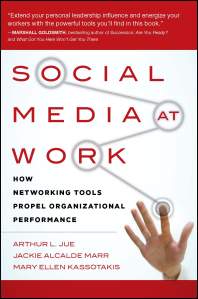Logic and hard facts are not always valued as much as they should be.
Oftentimes people believe that if they just “feel” or “think” something then reality shouldn’t really be taken into account…
I’m sure you all know examples where beliefs and feelings have substituted hard facts whether we are talking economy, environmental issues or politics.
– well, I can’t do much about that, but I can promote research and facts within my area of expertise: e-learning and content creation.
In e-learning and content creation a lot of people have a lot of (different) ideas on how to do certain things.
Therefore it was really refreshing to witness Saul Carliner from Concordia University in Canada talking about his findings about what is scientifically proven to work and what are just beliefs when it comes to Learning.
So here are some common beliefs in e-learning and content creation and whether there is scientific proof underneath or they are just that – beliefs.
“If an instructor narrates an asynchronous learning program, you should not display the text of the narration at the same time. “ – TRUTH!
This is supported by two empirical studies. Called modality effect, the duplicate message causes confusion in the system. Instead, just use bullet points (like a Powerpoint slide).
My comment: I was surprised by this and will take notice of this in my future work.
“Providing learners with control of the e-learning experience increases learning.” – MYTH!
No empirical evidence supports this point and 2 empirical studies support the opposite. As the extent of learner control increases, learning decreases except for a very small number of the most advanced expert learners.
My comment: This is what I have always said (without knowing if it was true…). We, as content producers, know how to structure the content in the best possible way and we should use this to help the learners learn in the most efficient way.
“Because digital natives tend to multitask, we should incorporate multitasking into our designs for learning. “ – MYTH!
No empirical evidence supports this and several empirical studies support the opposite.
Multitasking may not be as beneficial as it appears, and can result in a loss of concentration and cognitive ‘overload’ as the brain shifts between competing stimuli .
My comment: This is no surprise to me. I have never seen multitasking implemented in a meaningful way in e-learning.
“Young people of the digital native generation possess sophisticated knowledge of and skills with information technologies” – MYTH!
No empirical evidence supports this and several empirical studies support the opposite.
My comment: This is probably the most surprising fact for most people and could be used by older people to not give up on all the new gadgets and trends.
“Completion rates are highest for e-learning programs that have associated tangible impacts, such as certifications or compliance. “ – TRUTH!
This is supported by research.
My comments: This is probably the least surprising fact and something many of our customers have been doing for years.
“As a business strategy, Training groups should transition from training dominated by formal programs to training dominated by informal learning efforts” – MYTH!
This is not supported by any research.
On the other hand research indicates that informal and formal learning interacts in important ways.
My comment: This underlines that both way of learning has its place and should be part of any learning strategy.
“Line drawings are more effective than photographs for teaching technical procedures.” – TRUTH!
This is supported by research.
People learn better from multimedia messages when extraneous words, pictures, and sounds are excluded rather than included.
My comment: Maybe only a small subject, but good to know if you are creating content yourself.
You can read more about this and Saul Carliner on http://education.concordia.ca/~scarliner/







 There have been a series of excellent posts, particularly
There have been a series of excellent posts, particularly  Continuing the food analogy of the “
Continuing the food analogy of the “

